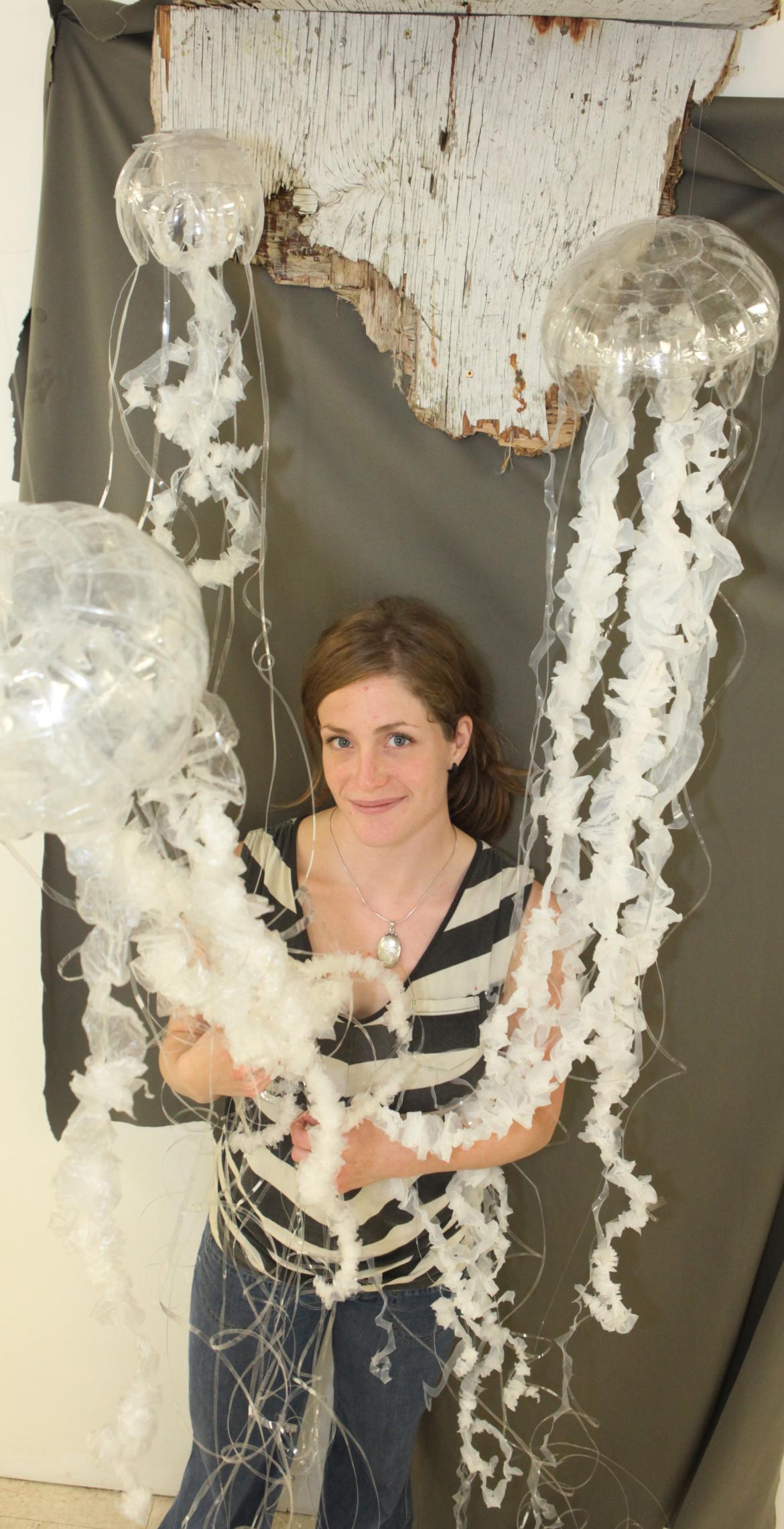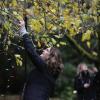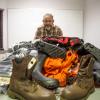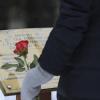
October 24, 2011 - 3:30am
The shimmering replicas of jellyfish may look fanciful but Vancouver Island University biology and art student Emily Rigney makes a serious statement with her sculpture created from shoreline trash.
“I live near the Pacific Biological Station and spend a lot of time on the beach. There is so much garbage, it’s astounding,” says Rigney.
Rigney, a fourth-year student at VIU, is majoring in biology with a minor in visual arts. Her latest arts assignment gave her a chance to combine her interests.
“I want to use art as a medium to relay environmental and biological messages. In my upper level biology courses I’m learning more and more that one of the big challenges in science is communicating with the public.”
She calls her sculpture “Beach garbage jellyfish” and the name pretty much says it all.
“The day that we got this ‘Found Objects’ assignment I picked up 28 water bottles on the shoreline,” says Rigney.
Rigney cut up the discarded bottles and combined the pieces to create the bell shape of a lion’s mane jellyfish (Cyanea capillata). She found more than enough plastic bags to use for the tentacles of her sea creatures. She rounded out her salvaged material with six-pack rings used for beer and soft drinks.
“A specific message behind this piece is how easily garbage can look like jellyfish to humans. One can imagine how deceptive it can be to sea animals,” says Rigney.
Sea turtles, tuna, shark, swordfish and at least one species of Pacific salmon (chum) feed on jellyfish and they can easily mistake a floating bag for a jellyfish. According to the California-based Sea Turtle Restoration Project, plastic marine debris kills 100,000 marine animals each year. The toll on birds is even greater.
“Emily’s sculpture is an excellent demonstration of how current issues in science affect artists,” says VIU Art and Design professor Fran Benton. “Emily has carefully constructed the jellyfish out of materials that are the opposite of what we usually use in sculpture. Rather than glass, bronze, or wood, she has meticulously crafted the work from pop bottles. Her use of the bottles is humorous but reminds us of the fragility of the marine environment and the dangers human culture poses to it.”
Rigney’s sculpture will be displayed at VIU’s new Deep Bay Marine Field Station. Rigney worked at the field station last summer on a research project aimed at restoring the Olympic Oyster population in Baynes Sound.
“We’re very excited about Emily allowing us to put her sculpture on permanent display,” says Field Station Manager, Brian Kingzett, who supervised Emily during her summer science position.
“It is estimated that a staggering six million tons of trash enter the world’s oceans every year. At the Field Station we want to increase the public’s knowledge of this serious issue. Emily’s evocative sculpture is an impressive way of engaging in this dialogue.”
Rigney, who is heading toward a career in teaching, appreciates the balance of studying art and science. She finds biology challenging because of the need to know the facts about specific areas of study.
“In art, you make up your own answers,” she says. “I’m a perfectionist so it takes work but I’ve been an artist since I was a little girl so it comes naturally.”
Rigney sees parallels in her art and science studies. “It’s about seeing the details and how they relate and connect. I suppose I like using both sides of my brain.”
While her jellyfish project is complete, Rigney continues to collect garbage washed up on the shoreline of Nanaimo.
“Every day, there’s a garbage bag full to pick up.”
While cigarette butts are a big proportion of the garbage she finds, Rigney is sticking to plastic for her raw material.
“My next piece will be little fish made from the tiny pieces of plastic that I find on the beach.”
-30-
Websites:
Deep Bay Marine Field Station
Art and Design Department
Biology Department
Tags: In the Community






